Home / Instruments
/Accessories / Ordering / Tips / Friends
archtop.com
1941 Epiphone Triumph
Status: For pricing and hold status for this instrument,
please check our Instruments
page here. If this instr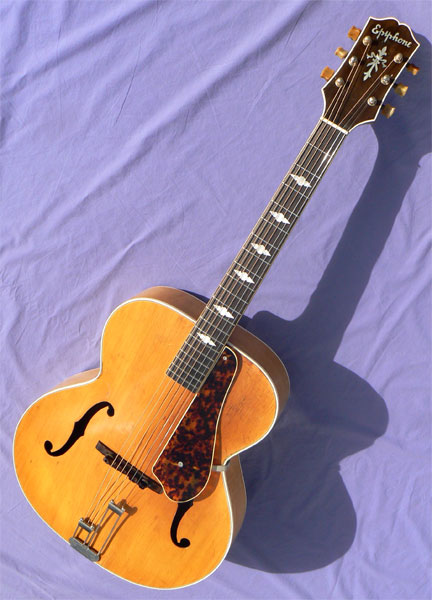 ument does not appear on the Instruments page
it has been sold, and is no longer available. Photos and descriptions of
Previously Sold instruments may by found
here. To be notified of examples of this
or any other model in the future, please contact [email protected].
ument does not appear on the Instruments page
it has been sold, and is no longer available. Photos and descriptions of
Previously Sold instruments may by found
here. To be notified of examples of this
or any other model in the future, please contact [email protected].
Serial #: 17512, green New York label
Body size at lower bout: 17 3/8" Scale length: 25
1/2". Nut width: 1 11/16" Neck depth, 1st/10th frets: .90/1.05
Materials: Solid carved tiger-flame maple back, maple sides; solid carved Adirondack spruce top; solid cherry neck with maple and walnut centerstripes; Brazilian rosewood fingerboard with mother of pearl inlay; prewar snowflake mother-of-pearl peghead inlay and diamond fingerboard inlays, triple-bound body, bound fingerboard and headstock, bone nut.
Hardware: Original nickel hardware includes 16:1 Epsilon-logo tuners, Pat. Pend. Frequensator tailpiece, hex-key adjustable truss rod. Vintage correct bound tortoise pickguard, period adjustable compensated rosewood bridge.
Notes: The Epiphone Triumph was introduced in 1932, becoming Epi's most popular full sized guitar until the company closed in the mid-50's. Priced competitively with the Gibson L-7, the Triumph is structurally identical to the upscale Deluxe and Broadway models.
By 1939 both Epiphone and Gibson had debuted natural blonde finishes for the first time in regular production. For the next two years, the new finish was limited only to the very top-line models, the Deluxe and Emperor. But by 1941, the Epiphone catalog proudly announced natural finishes on five of its other archtops, including its ever popular Triumph model.
This striking guitar is from that very first batch of blonde Triumphs, one of perhaps a dozen or so favored with the lustrous natural finish. Premium priced over sunburst examples, the blonde guitars were crafted of the most highly figured tonewood in the shop, to be highlighted under the clear lacquer. And this guitar is no exception, with dramatic rollers of flame in an unusual diagonal pattern on the carved maple back.
While retaining the graceful snowflake inlay of the Masterbilt era, these guitars were also the first Triumphs built with the elongated headstock that remained standard until the model was finally discontinued in 1956. The guitar is also fitted with the original epsilon logo tuning pegs, among the earliest 16:1 guitar tuners, and its original Pat. Pend Frequensator tailpiece. The soundboard is carved of Adirondack red spruce, with its original blonde finish slightly ambered under the footprint of the previous pickguard, now replaced with a vintage correct hand-bound guard crafted from an original template, in thick leopard tortoise shell acrylic.
This example has been maintained in fine shape, with no apparent structural cracks. The finish has weathered naturally to a warm amber, and is remarkably free of pick, buckle, or thumbwear. The neck has the comfy, slightly veed profile, typical of Epis, with smooth, low, action over a fresh high-precision setup. Neck angle and bridge height are both excellent, with a fine recent neckset, and recent vintage correct binding tight to the body.
Most remarkable however is the voice. Almost anyone can build a loud guitar, and this instrument has power to burn, but more. The clarity and transparency of the tone are simply outstanding, with deep resonant bass, and shimmering natural reverb in the upper register. It's simply one of the best sounding examples of this model we've heard in quite awhile.
An historic instrument, and an outstanding performer, all ensconced in its original Epiphone hardshell case. A rare find in every respect: grab it while you can.
Setup: The frets have been precision leveled, recrowned and polished;
trussrod tension and neck relief adjusted; bridge height adjusted; bridge
compensation set; string slots at nut and bridge inspected and recut as
necessary; bridge foot contour inspected and fit to top as necessary; bridge
radius inspected and recurved as necessary; bridgewheels and tuners lubricated;
fingerboard and bridge oiled; body and neck cleaned and hand polished.
This instrument is strung with medium gauge (.013) phosphor bronze strings. The guitar will accommodate lighter or heavier gauge strings, according to preference. String action is set at 4/64" to 5/64" at the 12th fret, with moderate relief for acoustic playing with medium strings. The action may be lowered or raised to your requirements with the adjustable bridge.
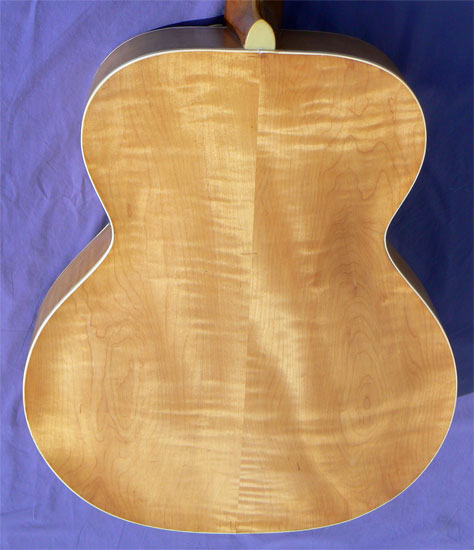
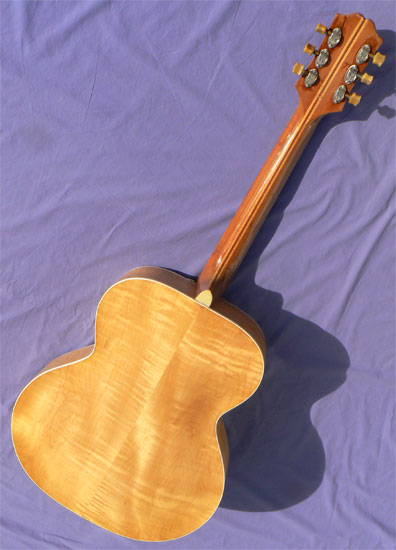
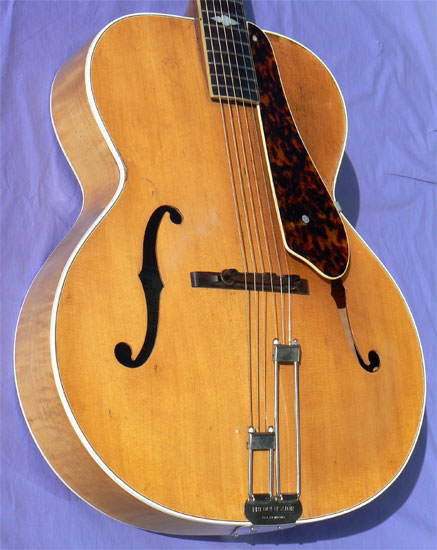
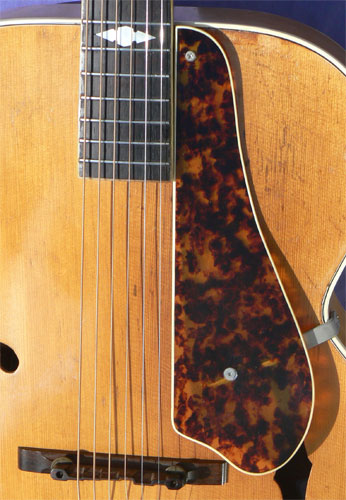
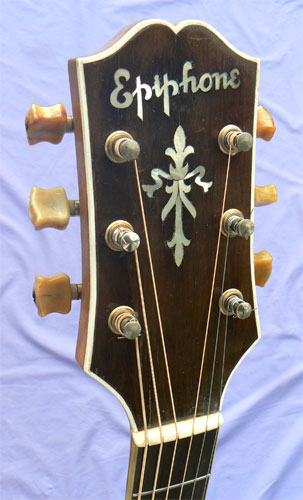 Home / Instruments
/Accessories / Ordering / Tips / Friends
Home / Instruments
/Accessories / Ordering / Tips / Friends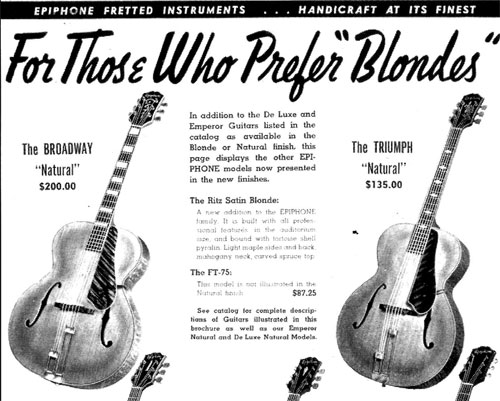
 ument does not appear on the Instruments page
it has been sold, and is no longer available. Photos and descriptions of
Previously Sold instruments may by found
here. To be notified of examples of this
or any other model in the future, please contact [email protected].
ument does not appear on the Instruments page
it has been sold, and is no longer available. Photos and descriptions of
Previously Sold instruments may by found
here. To be notified of examples of this
or any other model in the future, please contact [email protected].




